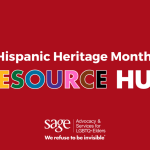Monkeypox (MPV): What to Know and How to Stay Safe
Want to keep yourself and your loved ones safe from the MPV virus (also known as Monkeypox), but not sure how? Here are some basic facts on what the virus is, what it does, who it can infect, and how to stay safe!
What is monkeypox?
Monkeypox is a disease that is caused by infection with monkeypox virus. People with monkeypox get a rash that may be located on or near the genitals or anus and could be on other areas like the hands, feet, chest, face, or mouth. This rash can initially look like pimples or blisters, may be painful or itchy, and will go through several stages, including scabs, before healing.
Additional symptoms can include: fever, chills, swollen lymph nodes, exhaustion, muscle aches, backaches, headaches, sore throat, nasal congestion, and cough.
While some people develop flu-like symptoms before the rash appears, others develop the rash before other symptoms, and still others will experience no symptoms other than the rash.
How long do symptoms last?
Monkeypox symptoms usually start within 3 weeks of exposure to the virus. If someone has flu-like symptoms, they will typically develop a rash 1-4 days later.
Monkeypox can be spread from the time symptoms start until the rash has healed, all scabs have fallen off, and a fresh layer of skin has formed. The illness typically lasts 2-4 weeks.
Who can get monkeypox?
Anyone can get monkeypox. At this time, data suggest that gay, bisexual, and other men who have sex with men make up the majority of cases in the current monkeypox outbreak. However, anyone, regardless of sexual orientation or gender identity, who has been in close, personal contact with someone who has monkeypox is at risk.
How is monkeypox spread?
According to the Centers for Disease Control and Prevention:
“Monkeypox can spread to anyone through close, personal, often skin-to-skin contact, including: direct contact with monkeypox rash, scabs, or body fluids from a person with monkeypox; touching objects, fabrics (clothing, bedding, or towels), and surfaces that have been used by someone with monkeypox; or, contact with respiratory secretions. This direct contact can happen during intimate contact, including: oral, anal, and vaginal sex or touching the genitals (penis, testicles, labia, and vagina) or anus (butthole) of a person with monkeypox; hugging, massage, and kissing; prolonged face-to-face contact; or touching fabrics and objects during sex that were used by a person with monkeypox and that have not been disinfected, such as bedding, towels, fetish gear, and sex toys.”
What can I do to stay safe?
Take preventative steps to stay safe in your everyday activities:
- Avoid close, skin-to-skin contact with people who have a rash that looks like monkeypox.
- Avoid contact with objects and materials that a person with monkeypox has used.
- Wash your hands often.
What do I do If I think I have monkeypox?
There is no treatment specifically for monkeypox, however, most people recover in 2 – 4 weeks without additional medical treatment. The CDC provides some steps you can do to make yourself more comfortable and reduce the spread of the virus.
Do:
- Talk to a healthcare provider and get tested. If you do have monkeypox, the CDC recommends you get vaccinated!
- Use gauze or bandages to cover the rash to limit spread to others and to the environment.
- Keep skin lesions/rash clean and dry when not showering or bathing.
- Wash your hands frequently and thoroughly.
- Wear a well-fitting mask around other people until the rash and all other symptoms have resolved.
- Eat healthy and get plenty of rest to allow your body to heal.
Don’t:
- Pop or scratch the rash.
- Shave the area with the rash until the scabs have fallen off and a new layer of skin has formed.
Should I get vaccinated?
The CDC recommends vaccination for people who have been exposed to monkeypox and people who may be more likely to get monkeypox.
People who are more likely to get monkeypox include:
- People who have been identified by public health officials as a contact of someone with monkeypox
- People who are aware that one of their sexual partners in the past two weeks has been diagnosed with monkeypox
- People who had multiple sexual partners in the past two weeks in an area with known monkeypox
If you are a registered participant of one of our SAGE Centers, we can help you get a vaccine appointment. Please contact us if you would like to connect with a member of our Care Management team and set up your appointment.
The preferred vaccine to protect against monkeypox is JYNNEOS, which is a two-dose vaccine. It takes 14 days after getting the second dose of JYNNEOS for its immune protection to reach its maximum. Learn more about vaccination options here. Or, check out these Frequently Asked Questions.
I have HIV – what should I know about monkeypox?
The signs and symptoms of monkeypox virus infection are similar in people with or without HIV, including characteristic rash, fever, and lymphadenopathy. For immunocompromised people, monkeypox virus infection may present with atypical manifestations or more severe illness (e.g., sepsis, disseminated rash).
The CDC offers tips for managing monkeypox in people with HIV as well as managing HIV in people with monkeypox.
Some additional HIV resource include:
- Clinical Considerations for Treatment and Prophylaxis of Monkeypox Virus Infection in People with HIV
- Clinical Guidelines Program: Monkeypox Vaccination in Adults With HIV
Additional Resources:







